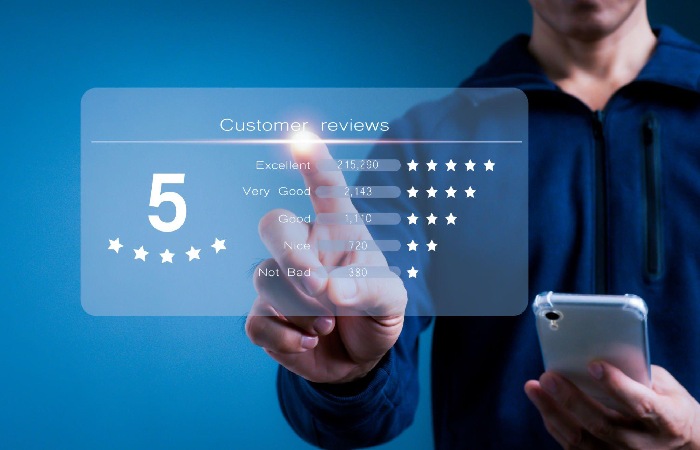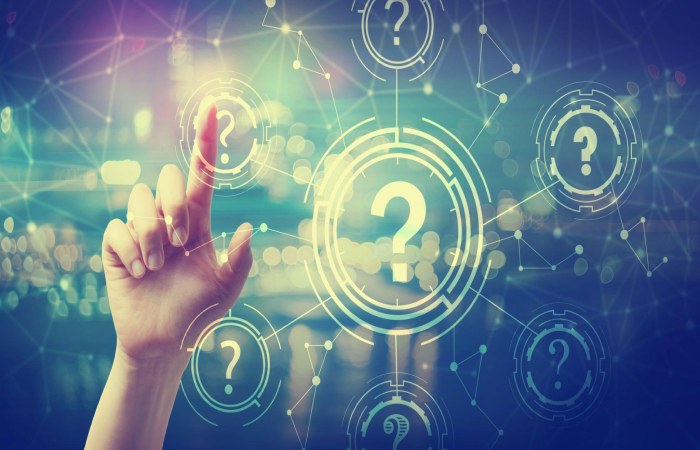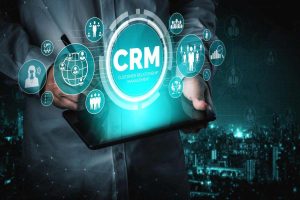Today we will talk about which question below represents a CRM analyzing technology question? first, we analyze the below question. In this article, we will also give you complete information about CRM and what question are raised in CRM technology.
Table of Contents
Which of the given questions represents a CRM analyzing technology question?
- All of these
- Why did sales not meet forecasts?
- What customers are at risk of leaving?
- What is the total revenue by the customer?
The correct answer of it is Why did sales not meet forecasts?
Why did sales not meet forecasts?

The wrong sales prediction results in the sales team moving to poor performance because either the sales quota are low or too high. As a result, they don’t reach the target that they have set the three main reasons why did sales not meet forecasts.
Poor or insufficient data on an exciting deal
Working with inferior information is like working without information. The truth is that many sales managers use a hit-in-the-dark approach. Insufficient information on the correct location of sales is the reason of their poor sales forecasting
No personal accountability for Sales forecasts
Few companies today have systems to ensure that the measurement and analysis of sales forecast accuracy is in check. Those who forecast sales have no personal accountability for their forecasts. The danger here is that they have no incentive to improve their sales forecasting method, they will never find ways to improve it to make it as accurate and realistic as possible.
Inability to trace the root causes of failure to close deals
Another important factor leading to incorrect sales forecasting is the failure to properly understand the deal dynamics and thus translate it into an accurate judgment about the likelihood of closing an opportunity.
About Customer Relationship Management (CRM)

Customer relationship management (CRM) is a technology focused on building mutually beneficial customer relationships through technology that allows marketing, sales, and service to share information and work as a team.
CRM systems can be either operational or analytical. Operating CRM technology systems collect customer information from various channels such as onsite encounters, phone, web, and call centers. organizes it, and makes it available to frontline employees to serve customers better. Analytical CRM systems analyze data collected by operational strategies to improve overall customer satisfaction and profitability for customers individually and collectively.
Do I need a CRM system?
CRM analyzing technology question – There are many elements to consider when deciding whether you need a CRM for your company. For example, if you’re a small startup with a few loyal customers, a spreadsheet may suffice. But, manual data entry is error-prone and time-consuming for growing businesses.
Common signs that CRM software is needed include trouble keeping contact information up to date or experiencing a lack of collaboration between marketing and sales representatives. In most cases, paid or free CRM systems improve communication and customer relations.
Is my company ready for CRM tools?
The best method to answer this question is to complete a CRM assessment. Think about how your team will use and take advantage of the CRM software. An assessment provides insight into the essential features of CRM and potential barriers to adoption.
Customer Relationship Management and Analysis

In some years, companies have invested in CRM systems that join with many other business processes. The development and installation of this type of system, for example, combining a telephone, Internet, and call center with a data collecting system that feeds into a vast customer database can be costly and complex. But the system can recover client data from the database and make it available to sales and customer service employees, making them more successful in dealing with customers.
Which Method of CRM technologies does the marketing department typically use?

Many businesses focus on making first-time customers with ads, emails, seasonal promotions, and coupon codes. But most eCommerce store owners forget about increasing their average order value, which is another excellent way to generate more revenue.
Making a new customer costs five times more than retaining a previous customer. According to zendesk.com client data is very important. That’s precisely why focusing on cross-selling and upselling can boost your profits.
Let now we will see what method the CRM technologies marketing department used. Above we have mentioned that they are focusing on cross-selling and upselling.
What is Upselling?
Upselling is a sales and marketing method to satisfy customers to purchase a more expensive item. You typically promote more expensive products, more profitable services, bundles, or package deals when upsell.
For example, if the customer is coming to buy an unbranded shoe if you offer branded shoes for an average range which helps to raise your average order value.
What is Cross-selling?- CRM analyzing technology question
Cross-selling is another method to boost your sales by giving a complementary product to your customers. You must be sure that the additional product increases the value of your customers.
Cross-selling example – If a customer is coming to buy a shoe you could offer them socks and other accessories.
The Three Phases of CRM – CRM analyzing technology question
Customer experience is the main factor in keeping clients with the ultimate goal of increasing customer experience in mind, business nowadays using CRM software for better management. Here we will dicuss the three phases of customer relation management, and let us start one by one.
Achievement Phase

In this phase delivering a pleasant customer experience is difficult. As first impression is the best it is essential to give positive impact on your first interaction with the customer. Offering a great customer experience takes more than a just being nice.
Complement phase
Rising customer service experience at this phase can also achieved by giving more personal attention such as promo coupons. Using CRM software sales team can access the database anywhere, anytime, and having the capability to access the database is like having a one-stop shop.
Retention Phase – CRM analyzing technology question
Keeping customers means you must have the main element such as fulfilling promises to excellent service and friendly staff and above all high quality product. Using CRM software has benefits such as keeping track of your business activity and that of your client. Lastly sustaining a good experience at this phase gets loyalty from your customers.
Customer Relationship management Interview Questions and Answers
Let us see which question below represents a CRM technology Analyzing question

1 Which of the following is right for customer value?
- Customer value = Customer Benefits + Customer Costs + Overheads
- Customer value = Customer Benefits - Customer Costs
- Customer value = Customer Benefits /Customer Costs
- Customer value = Customer Benefits + Customer Costs
The answer is Customer value = Customer Benefits - Customer Costs
2 Perceived Value of the Product is Reliant on Which of The Following? – CRM analyzing technology question
- Channel Deliverable
- Product Performance
- Warranty
- Quality
- All of the above
The answer is All of the above
3 What Is The Fullform Of R In CRM? – CRM analyzing technology question
- Regional
- Relationship
- Regression
- Real
- Reserve
The answer is Relationship
4 Relationship Selling Means
- Preparing list of relatives
- Cross-selling
- Selling to relatives
- Selling to strangers
- Telemarketing
The answer is Cross-selling
5 What Is The Consumer Information Source?
- Personal Source and Commercial Source
- Public Source
- Experiential Source
- 1,2 and 3
- None of these
The answer is 1,2 and 3
6 In The Factor Of CRM What Does The Symbol “SFA” Stand For?
- Sales field allocation
- Sales field audit
- Sales frontend audit
- Sales force automation
The answer is Sales Force Automation
7 In a CRM structure, if the hypothetical retention rate is 1.0, then the survival ratio at the last of the 3rd year is?
- 25
- 0
- 0
- 5
The answer is 1.0
8 The Dendrogram is a tool used in CRM in conjunction with which of these methodologies? – CRM analyzing technology question
- Discriminant Analysis
- Regression
- Pareto Analysis
- Cluster Analysis
The answer is Cluster Analysis
Key points
A dendrogram for clustering retail items is a tool used in CRM for applying homogeneous schemes for all the things in one cluster.
9 Arrange the Steps in the CRM Process – CRM analyzing technology question
- Developing CRM Program
- Collection of Customer data
- Analyzing Customer data
- Identify the target customers
- Implementing Programs
The answer is 2,3,4,1,5
Types of CRM Analytics

There are three types of CRM analytics are collaborative, operational, and analytical. Each comes with unique features that provide processes, such as storing customer data, identifying customer demand, or automating specific tasks.
Collaborative Crm
A collaborative CRM system goal is to streamline processes and workflows across different organizational structures. It benefits cross-departmental collaboration by providing a centralized customer data that every department – including marketing, sales and customer service – can access.
Operational CRM
An operational CRM system automates several methods by giving a complete picture of all customer interactions. Various company tasks, including sales forecasting, creating and evaluating marketing campaigns and identifying prospects are all automated through operational CRM.
Analytical CRM
An analytical CRM system works behind the scenes to analyze the sales data gathered by operational CRM apps. according to crm.org, It tracks various performance metrics to offer actionable insights into consumer behavior. This may benefit a company during its communications with the customer, as it can present the customer with relevant information to help satisfy their requests. Its primary components are a data mining module and OLAP tools.
Frequently Asked Questions – CRM analyzing technology question
Which of the following operational CRM technologies does the marketing department typically use?
[Which of the following questions can materials management help a company answer?]
What helps an organization identify its customers across applications?
Which of the following is not one of the three phases in the evolution of CRM?
What is selling additional products or services to an existing customer?
Which of the below business processes would you find in CRM?
SOME MORE PAGES YOU CAN READ – CRM analyzing technology question
What thing to know before getting a Car Stereo Repair Service
Complete Guide on Chrome://Net-Internals/#Dns 3: Why and How?
Cita Previa Seguridad Social
Cloud Computing Write For Us Contribute or Submit A Post
How to Avoid 6 Common Digital Marketing Mistakes
What Can A company Lawyer Do For You?
What is Computer Engineering and Computer Engineering Courses
Computer Write For Us
How to Convert PDF to Doc
Different Types of Corporate Communication

